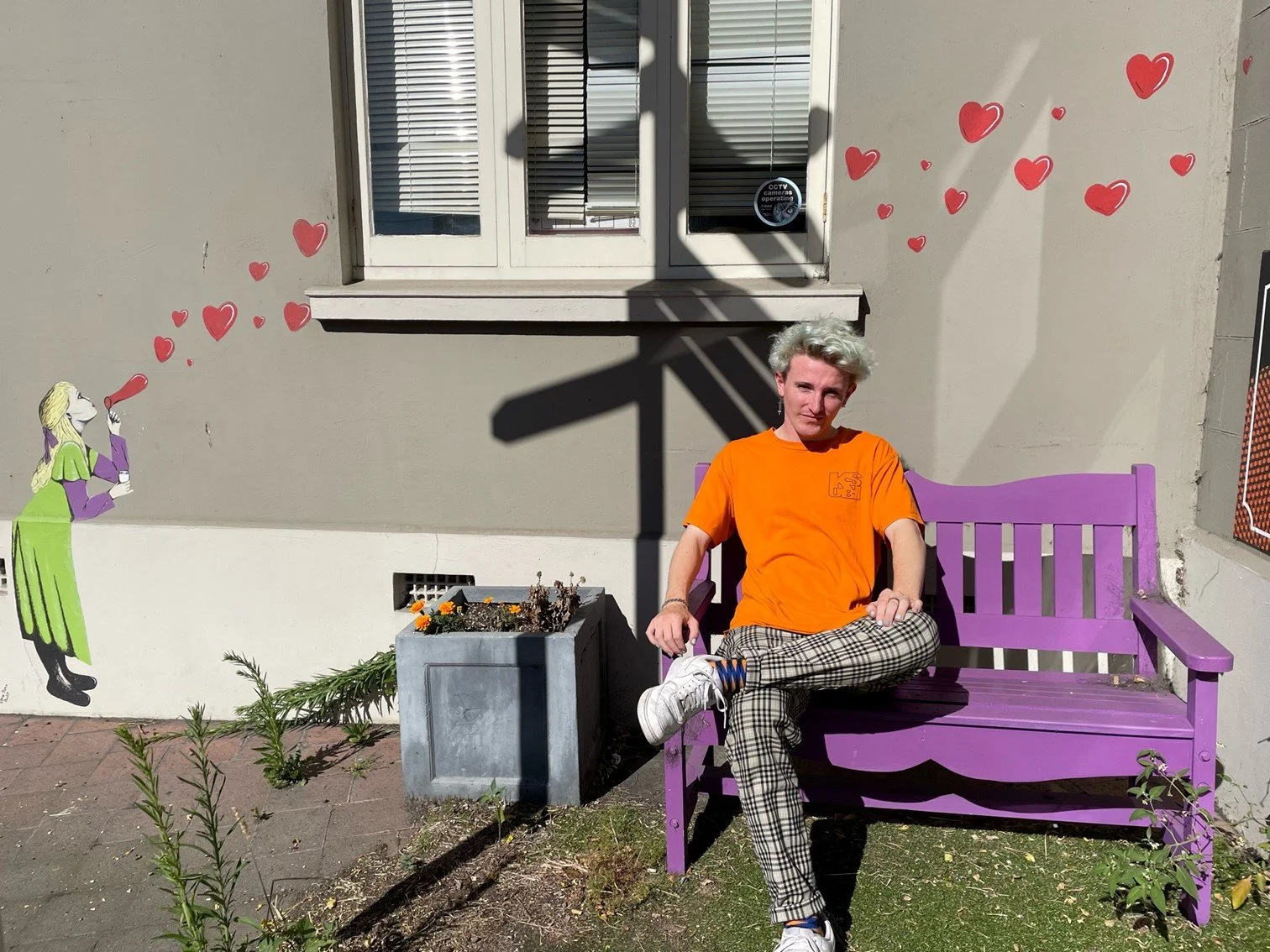Cody: Feeling more human
“Life-changing” is how people who live with type 1 diabetes often describe the switch to continuous or flash glucose monitoring. Each of them has a story. This is university student Cody Brinsdon-Hall’s.
Cody was diagnosed with type 1 in 2003, when he was five, and all the usual struggles of a new diagnosis were compounded by his phobia of needles and blood. He remembers dreading insulin injections, but not as much as the pinprick tests that came first. “I despised the finger prick because I could see the blood,” says Cody.
“Some days on it I’d feel like king of the world.”
As soon as he could, he insisted on doing his finger pricks himself. “I can’t stand the thought of someone else controlling how much blood comes out of me.”
It was easier for his parents to do his insulin injections, though; they could do it so that he didn’t have to see the needle going in. They continued to do his injections until he was 10.
His fears remained overwhelming, and he would test his blood sugar the bare minimum. It meant his blood sugars were often running high. “I was a very wild child. A very angry child. I would lash out.” It became obvious that high blood sugar was a large part of the reason: “That’s how it affects me.”
When he was 10, he attended his first independent Diabetes Youth Camp and forced himself to take another step towards autonomy. “I didn’t want to be embarrassed, so I needed to conquer what had been this unachievable goal of injecting my own insulin in my stomach.”
He loved that camp, and the ones that followed. “Those were the best times, the most comforting times as a diabetic,” he says. “All of these people around you, all the same as you.”
“Some days on it I’d feel like king of the world.”
Outside of camp, he continued to struggle. Although he could now test his blood sugar and inject his own insulin when he really needed to, the fears around needles and blood were entrenched. “I was never admitting to myself that I was high. I’d try and put off the injection process.” At the same time, he, like many people with type 1, dreaded going low, so he tended to keep his blood sugars high on purpose. That meant spending a lot of time angry.
A discovery
In October 2018, Cody’s mother told him about a friend whose daughter had type 1. The daughter was at secondary school and had just started using a Freestyle Libre flash glucose monitor. “My mum put a lot of effort into trying to convince me I should try it.”
At first, Cody hated the idea. Having a sensor with a small needle inserted under his skin for two straight weeks sounded like a nightmare. Then one day the friends came round, and Cody saw it in action.
“As soon as I saw her use the scanner, I thought ‘screw this phobia.’” He realised it would change everything. His mother got him one straight away.
“I almost passed out the first time I put the sensor on. I was sweaty, out of breath. I had to play music loud, and sing to do it.”
Once it was on, it was worth it. No more finger pricks. Cody could see where his blood sugar levels were with the swipe of a scanner, as well as whether they were heading upwards or downwards, or staying static. Now he didn’t have to try and stay on the high side all the time to avoid the risk of going low.
“Some days on it I’d feel like king of the world. If you can track your blood sugar levels so you can keep them around five, that is just massive. It has a big effect on happiness. Other people who don’t have diabetes are walking round on five. I finally felt normal, human, like them.” He says that even when his blood sugar is on eight (the upper end of the range that people with diabetes aim to stay within), he feels moodier.
He reflects that most people take their steady, even blood sugar levels for granted. They don’t realise that for people with diabetes, the ups and downs in blood sugar can affect mood and thought processes on a daily basis. Not only does Cody find he’s happier now, and more clearheaded, but “it takes a load off so you can think about other stuff”.
Recently his Libre scanner broke, and he had to finger prick again. “It was humbling, because of realising what I used to have to do, and what so many diabetics still tackle every day. I feel extremely grateful that my mum convinced me to use the Libre, and lucky she could fund it. It makes me much more positive. It’s almost exciting.”

